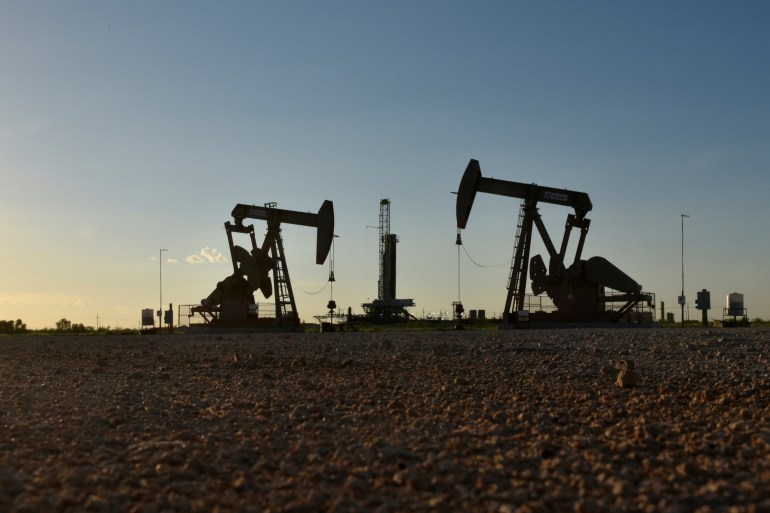Commodity prices have risen in recent months, outperforming stock indices, amid expectations of a recovery in global economic growth, a loose monetary policy by central banks, and high inflation rates.
In her article published by the American Oil Price website, writer Tsvetana Paraskova said that analysts and investment banks confirmed that the rise in commodity prices in all areas - associated with the 50% rise in oil prices during the past three months - has not ended yet, even if Some of the largest investment banks have begun to speak of a "new super cycle" (commodity price trend towards continuous upward mobility) that usually lasts for about a decade.
"But not all investment banks and analysts are convinced that the world is heading towards a new super-giant cycle for basic commodities in all fields," she added, warning that the term "super-cycle" is very optimistic for the rising rate of prices that could slow within a year or two and falter due to the negative impacts associated with Covid-19.
It is noteworthy that oil prices continued their gains for the fourth consecutive session today, Thursday, and reached their highest levels in more than 13 months, supported by the US Central Bank's confirmation that interest rates will remain low, and a sharp decline in US crude production last week due to the storm that swept across Texas.
In morning trading, Brent crude futures for April delivery increased 0.5% to $ 67.37 a barrel, while West Texas Intermediate crude for April delivery rose 0.4% to $ 63.45 a barrel, according to Reuters.
Commodity race
Early in October 2020, a few weeks before the announcement of an effective vaccine candidate, Goldman Sachs announced that commodity prices were on an upward trend in 2021.
Goldman Sachs added that hedging against expectations of rising inflation, the weakening of the US dollar and indications of central banks adopting "very loose" monetary policies, would be the main driver of the rise in commodity prices.
Goldman Sachs expected that the Standard & Poor's Goldman Sachs commodity index (S&P GSCI) would rise again by 42.6% in the energy sector over 12 months, and 17.9% in the precious metals area.
The author says in her report over the past three months, that Goldman Sachs Commodity Index outperformed the S&P 500, with the first registering an increase of 25%, compared to about 9% for the second.
During the same period, oil prices rose from $ 40 per barrel to more than $ 60 per barrel, driven by news of the discovery of the vaccine and the OPEC + (OPEC +) reduction in production rates, and expectations about a decline in supply and an increase in demand for oil later this year when they return. Economies to grow by providing massive stimulus packages.
The dynamics of a new super cycle
According to JPMorgan, there are a lot of reasons to believe that the new commodity super cycle may be just beginning.
"We believe that the new upward trend in commodity prices, especially the cycle of high oil prices, has started," said JP Morgan analysts, according to Bloomberg.
The author stated that the latest commodity super-cycle ended in 2008 after 12 years, fueled by increased spending and an economic boom in China.
On the other hand, JP Morgan believes that there are several potential factors that support the start of a new super-cycle, such as:
Projected global economic growth after the pandemic.
Monetary policies are "too loose".
Increasing inflation.
The decline in the value of the US dollar.
Financial inflows to hedge inflation.
Decline in investment in new oil supplies.
This comes at a time the International Energy Agency warned last year that if investment in oil over the next five years remains at the same 2020 levels, this will reduce the expected oil supply for 2025 by about 9 million barrels per day.
And last December, Wood Mackenzie, the energy consultancy, predicted that global investment in upstream projects will remain low, just as it was in 2020, and it is expected that investment in upstream oil and gas projects will reach its lowest level in 15 1 year at only $ 300 billion, 30% less than it was before the investment crisis in 2019.
US crude gained 0.4% in trading today, Thursday, to $ 63.45 per barrel (Reuters)
The writer quotes Simon Flowers, chief analyst at Wood Mackenzie, that "the recovery of oil demand again to more than 100 million barrels per day by late 2022, which will increase the possibility of a shortage in supply later in the decade." , Which will lead to higher prices. "
Speaking to Bloomberg earlier this month, Amrita Sen, chief oil market analyst at Energy Aspects, said that "too easy monetary policy" and ending the trade deflation could push oil prices higher. From $ 100 a barrel over the next year, "as the report conveys.
Is this the beginning of the next commodity super cycle?
Despite the increase in oil and other commodity prices, some analysts cautioned that the announcement of the start of a new super-cycle for commodities is still too early.
The author says that what oil and commodity prices are currently witnessing is a recovery, but the next super cycle could begin "within the next two or three years," according to George Chvili, investment portfolio manager at the asset management company, Ninety One. .
Ed Morse, Managing Director and Global Head of Commodity Research at Citigroup, told the Financial Post a few days ago that this trend is unlikely to turn into a commodity super-cycle, because when investment lowers, "raw material remains available." , Including crude oil.
The author emphasized that commodities undoubtedly benefited from optimism about boosting demand and rising prices in the post-Covid-19 period, but it might be too early to announce the start of a super-commodity cycle for the next decade.

